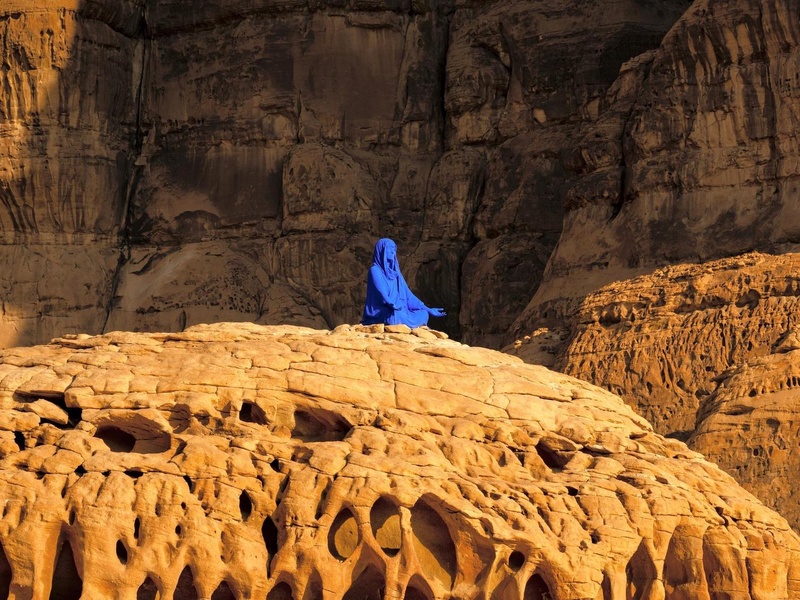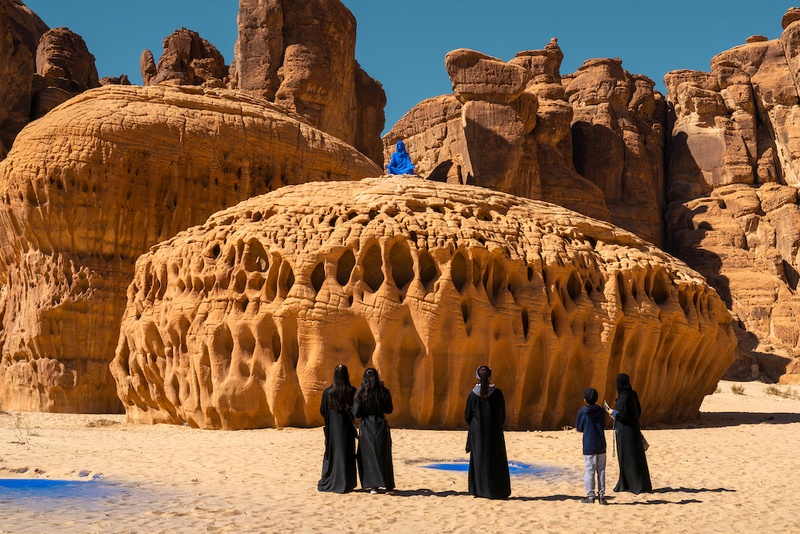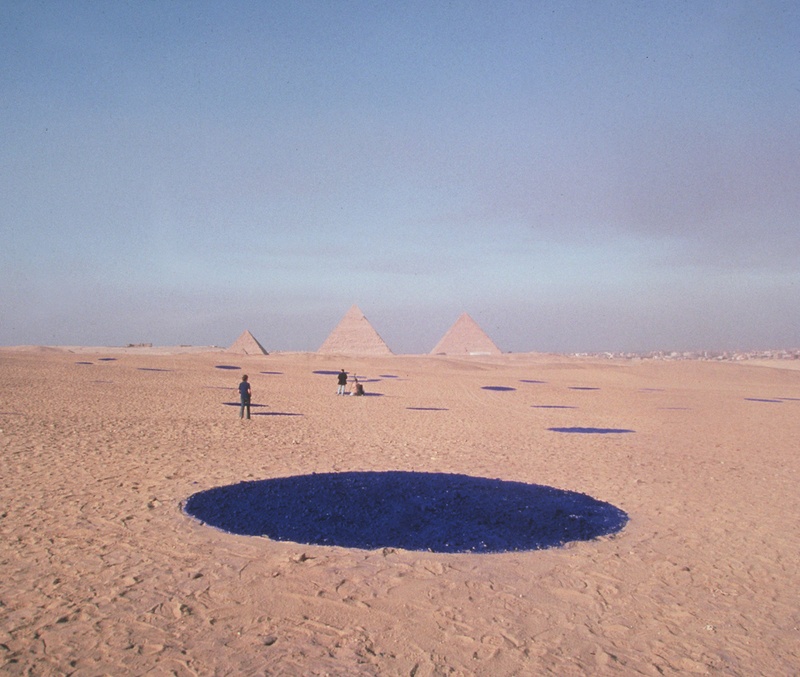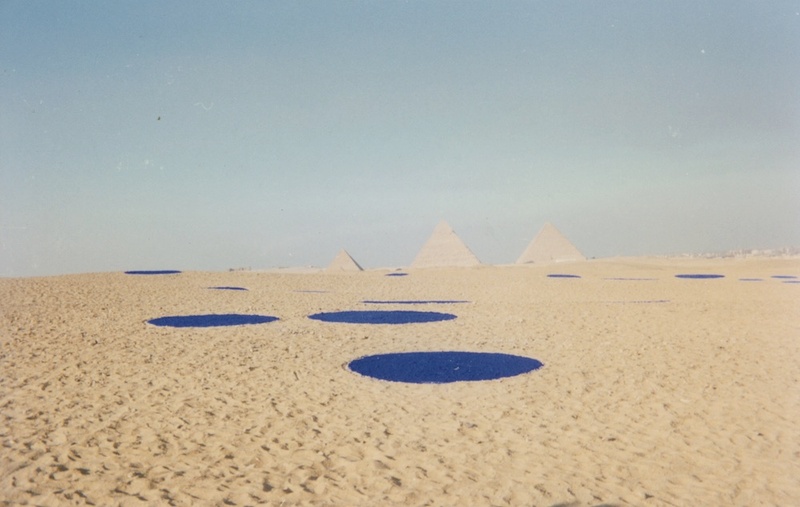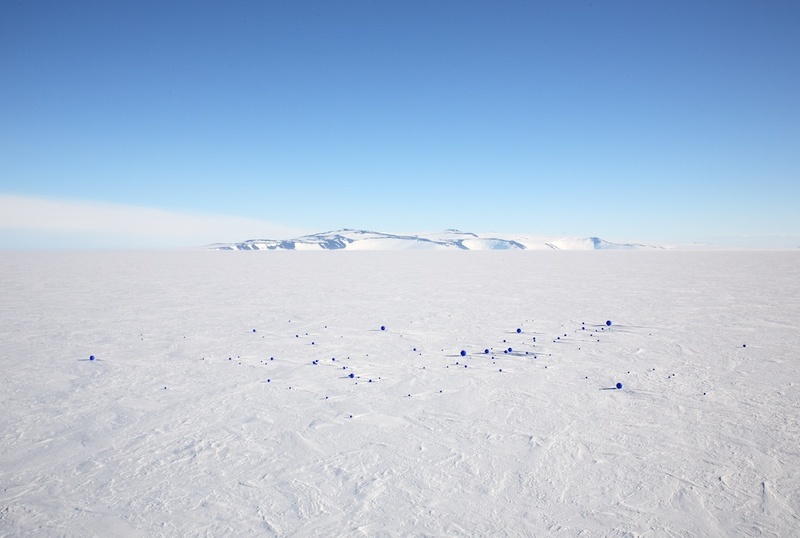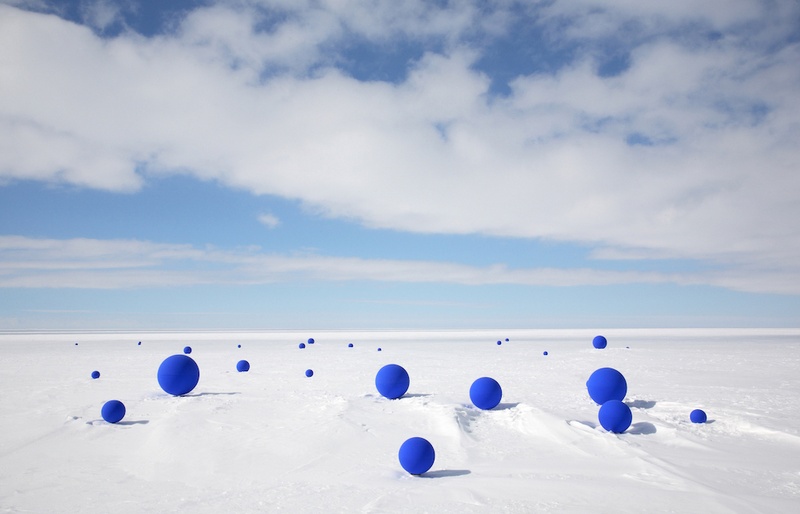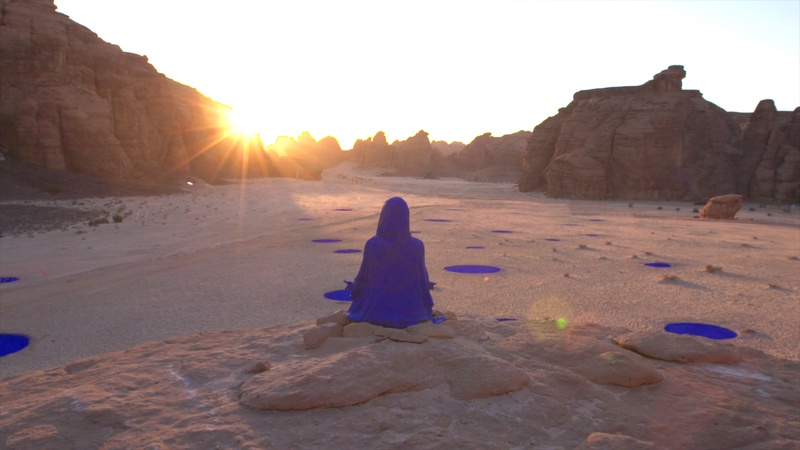I’d like to talk about impermanence and the power of embracing something that is fleeting.
What’s important to me is the trace of an idea—what remains in the mind in terms of an experience or an idea. That it lasts a long time is not what’s important. What’s important is to really presence the moment and it’s that incredible, elusive quality—in a way, the moment itself is ephemeral and therefore in a way everything is ephemeral. The acceptance of the ephemerality and the elusiveness of the moment is an important aspect. Nothing is as we all know it is. Everything changes and everything is in constant motion. If you look at it through the point of view of physics or astronomy, nothing’s static. It’s in continual motion. That’s how I see the ephemeral and I’m okay with that.
The only constant is change itself, which is a funny paradox. But a lot of people feel like they have to mark their way in the world by having something that’s permanent, whether it’s building monuments or having something etched in stone. What’s potent about the fleeting moment and how can you bring people into that space to experience it?
I have done fleeting things where people are not there and I have done fleeting things where people are actually engaged and are in it, participating. So it is a matter of location. When I did the project in Antarctica [Stellar Axis: Antarctica], I would have loved to have had many people be there and see it because there was nothing like the actual experience, but that particular location was very important in terms of the locality of the planet and what I was doing with that.
When setting foot in an environment for the first time, what do you like to absorb before you create an artwork in order to properly react to the space? Or, can you start creating before physically being there?
I’ve done both. I can think of doing something before I have seen the space, but it’s very much an interrelationship between what I’m doing and the space. What I do in there isn’t just what I do. It’s the context of what the site is, too. The site is a very important part of it and for me; the idea of the awareness of a space, our connection to space, is very important. Whether it’s space that we talk about—physical space like you and me in a room, or outer space and our connection to that—I think that’s important as well.
Lita Albuquerque, NAJMA (She Placed One Thousand Suns Over the Transparent Overlays of Space), 2020, pigment, aluminum, AlUla, Saudi Arabia, courtesy of the artist, photo by Lance Gerber.
As an artist who is tied to the cosmos in your work and reflecting connections of the earth to the stars, how often do you seek to seek connection with starlight?
Almost nightly. Obviously one can’t do that in the city. Many years ago we purchased a property in Malibu and the reason we bought it was because of the nighttime sky—we could see the Milky way. That was a very important component to me. I’ve spent so many years really looking at the stars, the actual star lights, and it’s sad to me that we haven’t been able to see that in the city, and how many people don’t even think about it—how they’re cut off from that experience. I think that’s one of the things that’s changing. I think one of the things that this quarantine is doing is making us stop and experience things in a very different way. Of course, again, if you’re in the city and you’re inside your house, you can’t. But there’s a moment of pause.
Can you talk a bit more about your life right now and how you acknowledge or celebrate the presence of a pause? How are you embracing that and how has it changed your days as an artist?
Well, it’s so wonderful. Interestingly enough, it came right as we moved. Our house burned down in November of 2018 and we were given a residency in Century City for 15 months. It took me forever to adjust to being in the city. We moved back [to Malibu] just a few days before the order to stay home occurred. So it was this very interesting shift. Now, being in a place that is just extraordinary, it’s almost like a little cabin in the canyon, and right now I’m looking out the window and I see squirrels and bunnies. I’m almost in a forest. I can’t believe it. We fell in a pot of gold. Of all the times to have to do this, I couldn’t be happier. It’s perfect timing to have the excuse to not have to go out. To have the excuse to not to have to be so busy.
Although I have to admit, I’m as busy as ever in a different kind of way. But it’s almost like this sigh of relief, like, “Oh my god, I remember this.” We grew up like this, totally being in touch with nature and with time. Just a different sense of time. And we were just running around nonstop. I don’t think I’ve ever cooked so much—three meals a day. I’ve never done that. It kind of brings me back to the ’50s.
I grew up in North Africa, in Tunisia, which was really away from a commercialized kind of living. So I grew up being very close to nature, not having all this media around and just being in touch with the poetry of life. Like people who were selling peanuts in the street were poets and there was this sense of just being. So this time for me is like, “Yeah, I remember this. What happened? And how beautiful.” I don’t want it to stop. It’s really nice, but then I’m a very hyperactive person as well so I haven’t just been inside the house. I go drive around the canyon and go see the ocean and I’ve gone a couple of times to my studio in Santa Monica. I get inspired by going down the canyon, by the trees all around me.
Lita Albuquerque, Sol Star, 1996, pigment, Pyramids of Giza, Egypt, courtesy of the artist.
Are there things that you’d want to fortify and carry forward if the world was to click into start mode tomorrow?
I talked earlier about space and our relationship to space—well, everything is a dialogue. And one thing I’ve learned in this time, it’s not about closing off the world. My ex-husband was a photographer and he did a book called Stasis, and stasis means no movement. It’s a disease actually. In medical terms, stasis is not a good thing.
What this time has made me see is I have to have this interrelationship with others. It can’t be just closed off. So it’s this very interesting balance. What I don’t want us to lose, all of us, is this sense of centeredness and this sense of what it is that’s important. I mean, here we are, all locked in with our families. Sometimes husbands and wives that never see each other and all of a sudden they’re there 24 hours a day and it brings us back to the humanity that we’ve kind of lost.
Nature all of a sudden is opening up. The air is not polluted. All the animals are coming out. The elements themselves are making themselves known in a way. The air is saying, “Hey, you’ve forgotten me.” Light is saying, “You’ve forgotten me.” The wind is saying, “You’ve forgotten me.” Dust is saying, “You’ve forgotten me.” You’re not the only ones here. That whole idea that we have come up this hill and totally destroyed so much. It’s one thing for advanced thinkers, philosophers, artists to think this way but now we’re experiencing it as a global collective and I think that’s what’s different.
As the noise floor of humans is dropping, nature sounds are rising and we’re being treated to a deeper sense of what’s around us. Sometimes in daily life, you can be caught in your own head, or what’s right in front of your nose; your telephone or your computer but then you look up and you say, “Oh, there’s a tree,” and you look up a little further, “There’s a mountain. Oh, the sky.” For someone who has connected so much with the cosmos and reflects the cosmos through your work, any advice for people to break that ceiling to get beyond what’s right in front of them?
Absolutely, absolutely. The first thing is meditation. These meditations just came to me about 30 years ago when I was running on the beach. I call them energetic meditations and it’s a way of the body and the breath to be connected to all that. Another one is presencing the moment through the time space continuum. What I mean by that is just to say the date. Very specific, like, “This is Friday, April 17th of the year 2020 at 3:36pm. Malibu, California, United States of America, western hemisphere, planet Earth, of a solar system existing in the Minor Orion Arm of the Milky Way galaxy next to the Virgo Cluster Galaxy next to the supercluster next to the great supercluster next to Laniakea Supercluster cluster. Then coming back from the Laniakea, super great, great cluster, Virgo Cluster, Milky Way, Orion’s arm solar system, planet Earth, northern hemisphere. America’s state of California, County of Los Angeles, Malibu, California at 3:37pm. Two people are talking.” I’ve done that for my entire life. At least 40 years of doing that maybe 30, 40 times a day.
Lita Albuquerque, Stellar Axis: Antarctica, 2006, fiberglass, pigment, Ross Ice Shelf, Antarctica, courtesy of the artist, photography by Jean de Pomereu.
What is the power of that?
First of all, you are grokking the moment. I remember certain ones—March 15th, 1988 swimming in a pool in Jaipur, India. May 6th, 1988 being on a donkey on the Valley of the Kings in Egypt. Or much less glamorous ones. It’s that accumulation of moments. We talked about ephemerality to begin with, but when you take in all of it together, it becomes something else. It becomes this whole.
It’s very important to be able to go far out and zoom back in and feel connected across an expanse. We’re in a moment where something more universal is happening and so we are connected in a very different way. There’s tragedy, but it’s also really beautiful to have a shared experience. I think that’s very important. I also love your idea of these archives of moments. You experienced a tragic moment, you lost your home to a fire in 2018. Did that in any way prepare you for this moment that we’re in? What do you gain from loss and how does that arm you for the future?
There’s two ways. The personal, which was phenomenal the amount of support that we received, the love. How people responded was incredible. The second part is more the actual experience and you asked me if it’s prepared me for this. Absolutely. You hear this from a lot of people: if you’ve lost everything, then you’ve got everything, in a way. It’s like you can’t lose anymore. It does prepare you.
To this day I don’t think I’ve processed everything yet, but there is an incredible change, but it’s a process and it takes a long time. Certainly in terms of this, yes. And when it happened, because it had a lot to do with global warming, I was going, “I hope this isn’t the beginning for the world,” that people will experience this in one form or another. We are experiencing to some degree a loss but we’re gaining so much. I think what we’re getting are so many gifts. I think that’s what happens. If you can see the gifts. If you can stop enough beyond the grief, beyond the uncomfortable, beyond the annoyance, to the gifts. And I think that’s what that idea of the ephemeral comes back to, the moment.
I imagine you’re a nimble person and when you’re working with an environment, you’re moving into spaces that are shifting and changing. How do you balance being in control and then opening up to what you can’t control and embracing that, if at all?
I had a huge experience of that in January. I did a project in Saudi Arabia called Najma that was about a 25th century female astronaut, a fictitious character who comes to this planet to teach us about our relationship to the cosmos. I had a sculpture of her. What happened was I had prepared for the rain because we probably used maybe as close as a ton of powdered pigment to do these large circles of powder blue. What I hadn’t prepared for, which is ridiculous, but I hadn’t prepared for the desert winds. It was like, “Okay.” And then what came to mind was sand dunes are formed by the wind, right? So it was this total moment of horror as 70-mile-hour winds were just blowing like crazy totally taking up the pigment. And it was gorgeous. And this was not the first time this has happened with me, but on that scale. And then the acceptance, of course, this is the beauty of it. This is nature. It made a painting on the sand that I couldn’t have done on my own. We have to accept it. We have to learn how to hold both chaos and fluidity. I think this period, we are all seeing what nature is able to do now that we have less of a footprint and we’re seeing what we’ve done. And so now what are we going to do about it? That’s the question.
Nature seems like your most constant collaborator—the stars and the earth and the elements. All these things you’re collaborating with and working with. Going forward, is there something you’re most excited about or working on?
Absolutely, absolutely. It is a combination of performance, the human, and what needs to be done collectively. And it’s almost operatic. Both in nature and in the cosmos. So, yes, it seems as if the ideas that are coming in have to do so much with what it is that we have to do. As an artist it’s really about inspiration. Inspiration that will move society. The artist is the one that sounds the bell. That’s what we do.
Lita Albuquerque recommends:
A strong morning ritual including gratitude, writing, reading, meditation, exercise and jumping in the ocean.
Philip Glass’ Einstein On The Beach
Laurie Anderson’s “O Superman”
Susan Kaiser Vogel’s “Blue Flame”
Lita Albuquerque, NAJMA (She Placed One Thousand Suns Over the Transparent Overlays of Space), 2020, pigment, aluminum, AlUla, Saudi Arabia, courtesy of the artist, photo by Lance Gerber.

